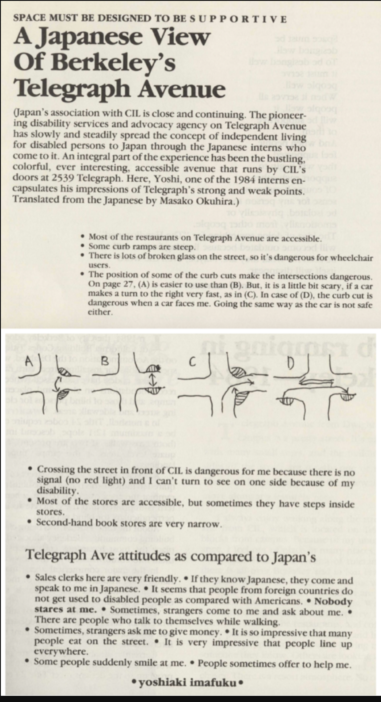People with disabilities thought critically about their relationship to the built environment, devising strategies to conceptualize positive and negative aspects of accessible routes. Conducting environmental audits and surveys was standard procedure.
By 1984, independent living centers had spread across the globe, and the CIL began hosting interns from Japan to work for periods of time. One intern, Yoshiaki Imafuku, wrote about his contrasting experiences of disability in the US and in Japan.
He also developed the accompanying diagram to illustrate how various curb cut orientations directed wheelchair users into traffic. Imafuku’s diagram suggests how, in the effort to make city streets accessible to those in wheelchairs, the first curb cuts had unintentionally created safety hazards. Around this time, new statewide standards in Title 24 were implemented to make curb cuts safer.
